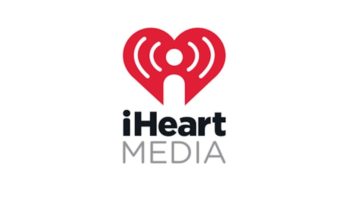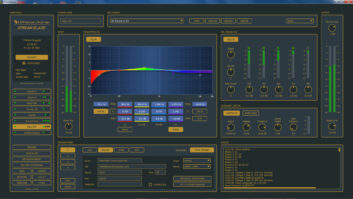Like most broadcasters, the Canadian public-service broadcaster CBC Radio is trying to exploit new technologies to do its work better … and possibly cheaper.
One solution has been to conduct audio interviews via the Web using Skype, the voice-over-IP telephone service.

By using Skype, programs such as the national technology and culture show “Spark” are able to make free calls within Canada, and pay just pennies per minute to go international. The calls are conducted using computer-connected microphones and headsets, which take the place of conventional telephones. The audio can be played live to air, but is usually recorded for editing and later playback.
Better yet, “Skype-to-Skype calls” — which is how “Spark” usually uses Skype — “are free, regardless of geography,” said “Spark” producer Dan Misener. “No ‘pennies per minute to go international’ when it’s computer-to-computer.” He added that, as far as “Spark” is concerned, the main reason for using Skype is to access more guests, more effectively.
Access to guests
“Skype gives us access to guests we might not otherwise be able to reach,” said Misener. “It’s much easier to book guests in their own homes or offices via Skype, rather than sending them to an ISDN studio.”
This said, Skype is not quite as reliable as plain old telephone service — although it can have better quality audio — or ISDN. However, for radio stations looking to cut phone costs for prerecorded interviews, Skype can be a real money-saver.
“When it’s working right, Skype can sound great,” said Misener. “The big disadvantage, for us anyway, is the unpredictable audio quality.”
The Conversations Network, a California-based nonprofit that records and collects audio for free replay on the Web, also has embraced Skype for recording far-flung events.
“Our concept is to capture all of the speeches, lectures and other audio content that disappears once they are done live,” said Doug Kaye, executive director for The Conversations Network. “Until 2007, we didn’t use Skype for recording interviews as the quality was too poor. But improvements since then have resulted in Skype providing excellent quality audio for radio and the Web.”
The process of using Skype begins by downloading the Skype client program from www.skype.com. Once this is installed on a broadband-connected PC (dialup is too slow), just connect a headset with microphone.
“Although you can use a studio microphone, a standard USB headset with microphone works fine,” said Kaye. “The critically important part is the USB connection. This option doesn’t run into the level-balancing problems that analog-connected mics do.”
The next step is to install a program for capturing both audio channels of the call. The Conversations Network uses Audio Hijack Pro and CallBurner to do this on a PC.
It is also possible simply to patch the local voice into Channel 1 of a mixer and the distant audio into Channel 2. The audio can then be recorded directly to a digital recorder or hard drive.
Once the local studio is ready to Skype, it is necessary to make sure the person being called has a similar Skype setup. If not, the studio can use the “Skype Out” service to call a regular telephone.
“Even if you have to use Skype Out, which does have a cost attached to it, you will still pay less than if you were using a standard telephone to telephone connection,” Kaye said.
“On the CBC’s end, we run Skype on a PC in our radio studio,” said Dan Misener. “The ins and outs are fed through the studio console, which allows us to record directly into the CBC’s recording/editing/playback software, DaletPlus. On the interviewee’s end, we always aim for headsets that provide nice, tight miking and headphone isolation.”
Limits, assessments
Thus Skype offers a cheaper way for radio stations to conduct telephone interviews.

A simple USB microphone, like this Logitech Internet Chat headset, can deliver broadcast-quality audio via Skype. “This said, there are always lots of variables at play whenever we do Skype interviews,” said Misener. These include “the quality and speed of the Internet connection, the quality of a guest’s microphone, the speed of their computer and the distance between us and them. For any number of reasons, Skype can sound great or it can be finicky.”
As a result, “We primarily use Skype for research and taped radio interviews,” said Misener. “Our show is mostly pre-taped, so we always try to have a backup method of recording the interview (usually telephone). If Skype is acting up, we go to the backup. Personally, I wouldn’t want to rely exclusively on Skype in a live on-air radio situation.”
Doug Kaye noted that while dial-up connections are too slow to handle broadcast-quality Skype calls, a wired broadband connection isn’t always necessary. They have used satellite, Wi-Fi and 3G broadband connections with varying results.
“Satellite [transmission] is always a problem due to the quarter-second delay in each direction,” said Kaye. “It’s that problem of stepping on one another. It’s not something unique to Skype. Wi-Fi is okay, if the connection is good. 3G depends entirely on the connection. It can be great or awful … no safe rules to go by.
“We’ve been quite successful linking to Africa and India, but not using 3G and certainly not using anything that goes via satellite.”
Doug Kaye doesn’t pretend that Skype is the perfect replacement for telephone-connected interviews. “But when it works — which it usually does — Skype provides an amazing audio product at very little cost,” he said. “For broadcasters trying to cut their budgets while maintaining or improving their audio quality, Skype is a very useful tool for them to have.”
Solved a programming problem of your own with a new tool? Write to [email protected] to tell us about it.












